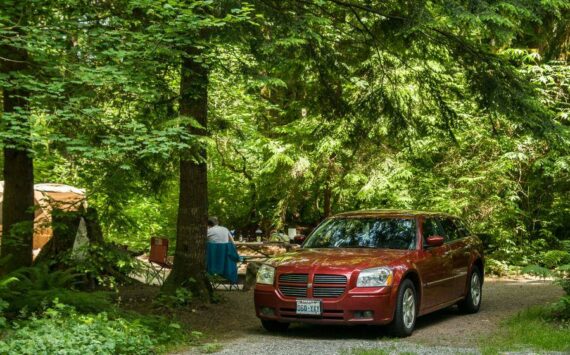By Morf Morford, Tacoma Daily Index
Income vs the life/work balance
To put it mildly, productivity is a bit of a challenge to define. Most, if not all of us, work with the knowledge that we as individuals are contributing to, not only our immediate office, employer or agency, but also our surrounding community and, to a degree few of us could imagine, our state, and of course, our national, even global economy.
Measuring and defining total/individual/community productivity on a state-wide basis is even more obtuse. History, local laws and policies, regional resources and many more variable dictate how “productive” any given state might be.
Factor in market forces (like interest rates or global tariffs or supply shortages) and seasonal variations (like summer or holidays) and any given forecast or summary feels more like an exercise in wishful thinking or documenting our own assumptions and biases.
This is where long term observations help.
One recent study based on national research shows a clearly defined geography of productivity.
Those of us who work (and get paid for it) know that our work has value, but our individual contribution to the aggregated economy of our state is a bit of an abstraction. The US average (based on numbers from the Annual labor productivity by state and region, released May 25, 2023; Bureau of Labor Statistics, Office of Productivity and Technology) sits at $79.48 “per hour”, and, as is the case with averages, around half of all 50 states sit below this, demonstrating that many states are providing better than others, regardless of size and population.
Mississippi takes the prize as the statistically least productive state, with a value-added per hour worked of just $58.80. Arkansas is next worst, coming in with around $63.23 added per hour worked. Then the state of Maine, with $63.41 for every hour worked in the state. Montana comes in fourth worst, with a value-added per hour worked of $64.04.
Rounding out the worst five is the state of South Carolina, with $65.00 added per hour worked. The remainder of the worst ten are Idaho, Alabama, Vermont, Kentucky and Missouri.
Who works the least?
Oddly enough, there doesn’t seem to be a correlation between those states that are most productive and the number of hours worked by the typical worker.
Forty hours a week has been the benchmark for full time employment for decades, but there is nothing sacred about the historic 8-5 work schedule. Several European nations have been transitioning to shorter work weeks for several years.
Among the shortest average working weeks in 2022, the Netherlands (32.4 hours) was followed by Austria (33.7 hours), Norway (34.1 hours) and Denmark and Germany (both 34.6 hours). All five Nordic countries had shorter average working weeks than the EU average. But not all of Europe
When it comes to working longer hours, Turkey (42.9 hours in 2020) was followed by Montenegro (42.8 hours, 2020 data) and Serbia (42.3 hours).
As you might guess, male workers had longer average working weeks than female workers in all EU countries in 2022. The most significant difference among EU countries was in the Netherlands, with a gap of 8.5 hours. The average gender gap in the EU was a shade over 5 hours – one hour each day of the week.
Working in the USA
Here in the USA, Delaware is statistically the state working the shortest number of hours in a typical work week. An average of 31.14 hours was worked per job, the lowest of any state. Montana is next lowest with 31.24 hours worked weekly.
Tied for third lowest are Wisconsin and New York with an average of 31.65 worked hours per week. Utah comes in a close fourth place on the list, with 31.66 hours. At the end of the lowest five is Rhode Island with 31.73 hours worked weekly.
Rounding out the worst ten (for working the least) are Vermont, Idaho, Colorado, Hawaii and New Mexico.
Like every data point, these are snapshots of a moment in time. How these trends, numbers and comparisons will fare in the coming years is, at best, anybody’s guess. You can keep tabs on the ever shifting financial landscape here – https://wealthofgeeks.com/.





